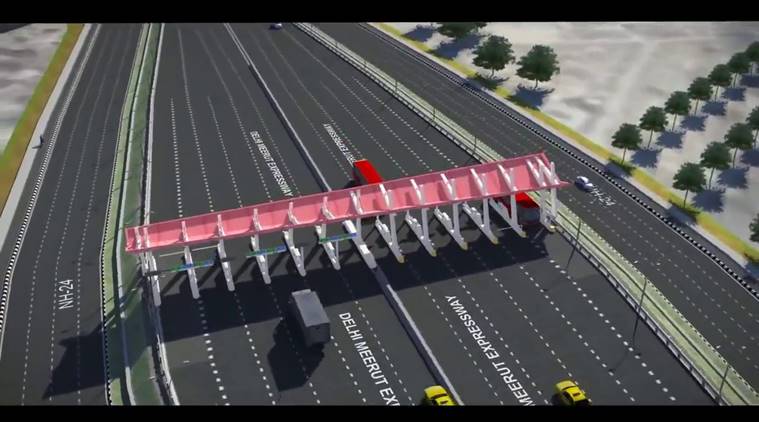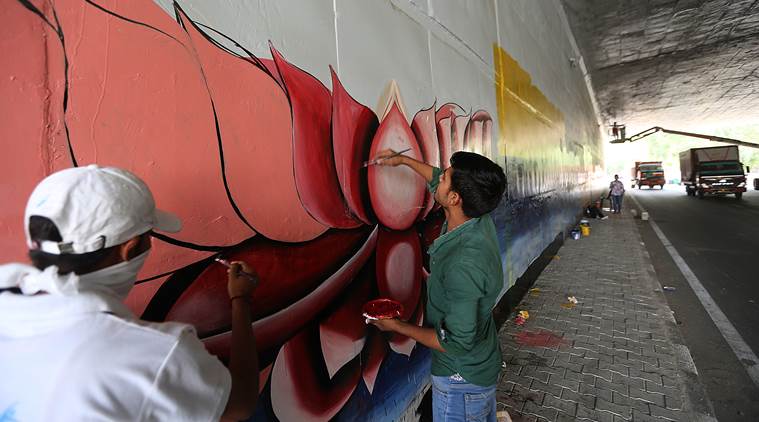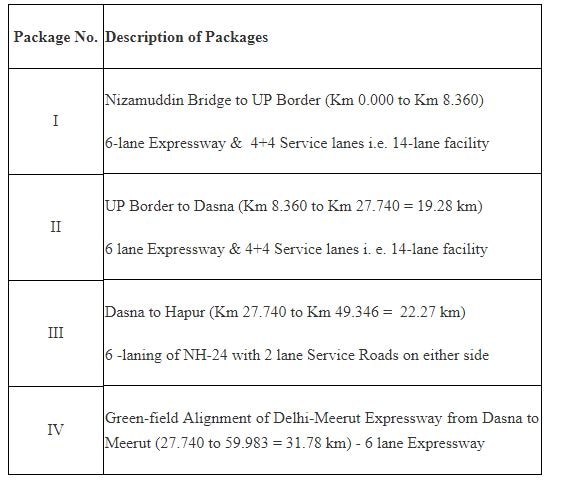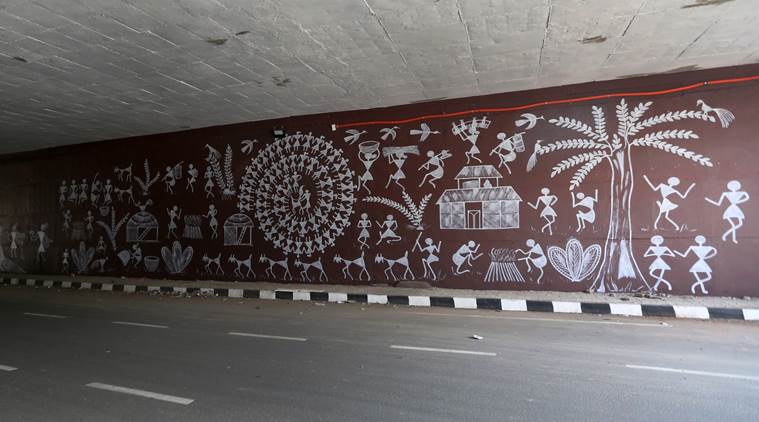 Delhi-Meerut Expressway which is expected to cut down the travel time between two cities to 60 minutes, has a length of 82 kms, of which the first 27.74 kms will be 14-laned , while the rest will be 6-lane expressway.
Delhi-Meerut Expressway which is expected to cut down the travel time between two cities to 60 minutes, has a length of 82 kms, of which the first 27.74 kms will be 14-laned , while the rest will be 6-lane expressway.
Prime Minister Narendra Modi on Sunday inaugurated phase-1 of the Delhi-Meerut Expressway, India’s first “14-lane highway”, and will also declare open the Eastern Peripheral Expressway which connects Haryana’s Kundli on NH 1 and Palwal on NH 2.
The twin projects happen to be one of India’s most ambitious road network initiatives in recent times. The 14-laned (Six lanes+ four service lanes), 82- kilometre-long Delhi-Meerut Expressway, which connects Delhi to eastern parts of Uttar Pradesh, is equipped with several features to improve the air quality and reduce pollution in Delhi NCR.
Delhi-Meerut Expressway
Delhi-Meerut Expressway is expected to cut down the travel time between the two cities to 60 minutes. The first 27.74 kms of the expressway will be 14-lane, while the rest will be six-lane. The project was built at an approximate cost of Rs 4975.17 crore. Also, this will be the first expressway to have dedicated bicycle tracks on the 28-kilometre stretch between Delhi and Dasna.
 The National Highway Authority of India (NHAI) has commissioned various street artists, agencies and NGOs for the beautification of the newly built flyovers of the Delhi Meerut Expressway. (Express Photo by Tashi Tobgyal)
The National Highway Authority of India (NHAI) has commissioned various street artists, agencies and NGOs for the beautification of the newly built flyovers of the Delhi Meerut Expressway. (Express Photo by Tashi Tobgyal)
The first phase of Delhi-Meerut Expressway measures 8.360 kms and stretches from Nizammudin Bridge to Delhi-UP border, including a six-lane Expressway and four service lanes (4+4) on both sides. The first phase of the expressway was completed in 18 months at a cost of Rs. 841.50 crore. It has a 2.5-metre-wide cycle track on both sides of the highway, a vertical garden on the Yamuna Bridge, solar lighting system and a drip irrigation system to water plants in the garden. These measures have been included to check the alarming levels of air pollution in Delhi.
The project entails construction of 11 flyovers/interchanges, five major and 24 minor bridges, 3 ROBs (rail over bridges), 36 vehicular and 14 pedestrian underpasses. It will also have an elevated section of 5.91 kms. The entire project has been divided into four packages:

Eastern Peripheral Expressway (EPE)
The foundation for the Eastern Peripheral Expressway was laid on November 5, 2015. The EPE is a part of the Peripheral Expressways project that has been envisaged with the desire of ‘decongesting and de-polluting the national capital by diverting the traffic not destined for Delhi’.
At a declared cost of Rs. 5900 crore, 1700 hectares of land has been acquired for the project. Besides this, the cost of construction for the project amounts to Rs 4617.87 crore. The Expressway has been reportedly completed in 500 days, as against its scheduled target of 910 days.
 SaraKale Khan -Ghaziabad stretch, where artists have been creating stunning street art work on the sides and beneath the flyover Uturns. One of the notable art is a strecth of Warli Art from Maharashtra. (Source: Express Photo by Tashi Tobgyal New Delhi)
SaraKale Khan -Ghaziabad stretch, where artists have been creating stunning street art work on the sides and beneath the flyover Uturns. One of the notable art is a strecth of Warli Art from Maharashtra. (Source: Express Photo by Tashi Tobgyal New Delhi)
Entry and exit on the expressway is feasible through designated interchanges only. The Expressway has a total of four major bridges, 46 minor bridges, three flyovers, seven inter-changes, 221 underpasses, eight ROBs (rail over bridges), and 114 culverts.
EPE is the first expressway in India to use a solar powered-lighting system on the entire length of 135 km. There are eight solar power plants, with a capacity of 4000 KW (4 megawatt) for the lighting of the underpasses and powering solar pumps for watering of plants on the expressay. Rainwater harvesting has been provided at every 500 meters on the EPE and there is a drip irrigation system for watering of plants all along the expressway.
Another special feature of the EPE is that the toll will be collected only for the distance travelled and not for the entire length of the expressway. Also, Weigh-in-Motion (WIMs) equipment have been installed at all 30 entry points of the Expressway to stop entry of over-loaded vehicles.
The toll plaza on EPE is 170 feet high and 154 feet wide on both sides. It will house the Information Technology control system of the entire EPE. Under the toll plaza there is a digital art gallery with holographic models of major structures including the making of the EPE.